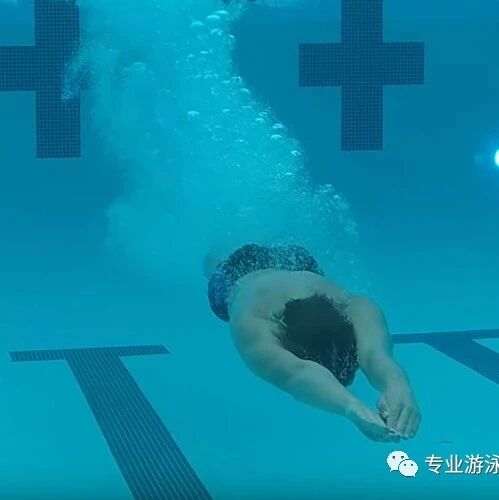There are three key thresholds for improving your breaststroke: stable hips, efficient elbow movements, and a strong sense of rhythm.
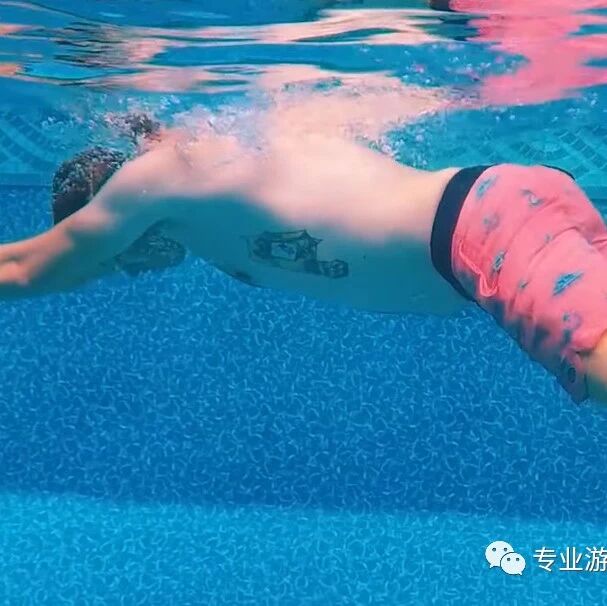
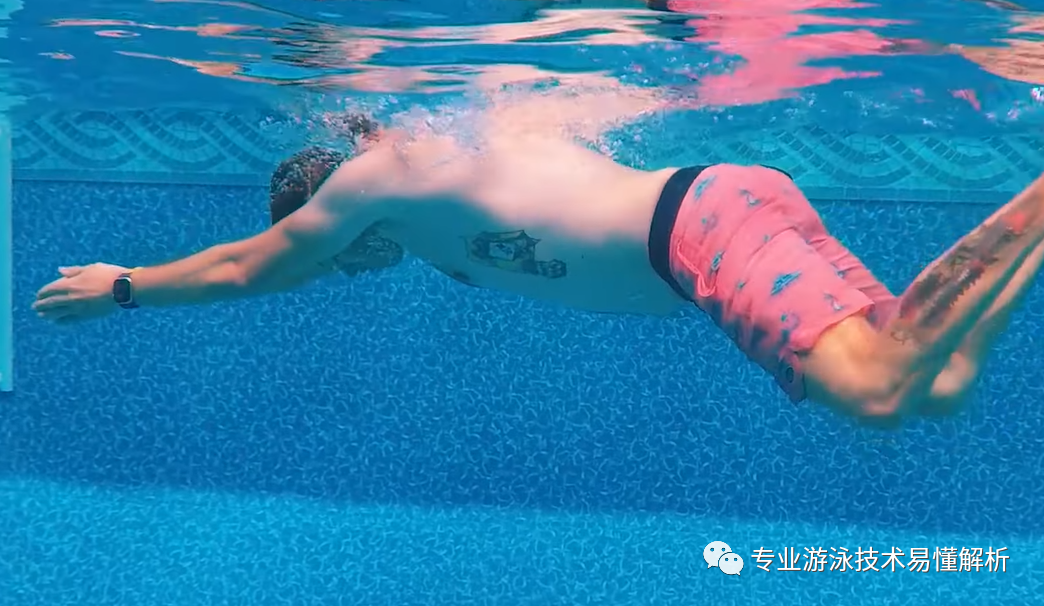
Breaststroke is easy to learn but hard to master. As a horizontal-axis stroke, it places significantly greater emphasis on technical factors during the swimming motion compared to vertical-axis strokes—meaning a swimmer’s height advantage doesn’t provide as decisive an edge. For casual swimming enthusiasts looking to excel at breaststroke, mastering the sport’s three key principles isn’t enough; you also need to pay close attention to often-overlooked technique details. This will help prevent the development of incorrect movement patterns during self-practice, ensuring steady progress and allowing you to refine your breaststroke skills further.
The three key principles for advancing in breaststroke: keep your arms moving while your legs remain still, ensure your hands don’t cross past your shoulders or elbows past your back, and practice a slow recovery followed by a quick, powerful kick, holding the glide briefly. To improve your breaststroke technique, there are three essential milestones: 1. Master the seamless flip-foot-to-backkick-and-clamp motion of the frog kick—performing it all in one smooth, fluid sequence; 2. Perfect the natural rhythm of your arms as they externally and internally sweep, naturally lifting and squeezing your elbows throughout the movement; 3. Ensure a smooth, coordinated connection between the inward pull of your arms and the propulsive power generated by your frog kick, maximizing overall efficiency and force.
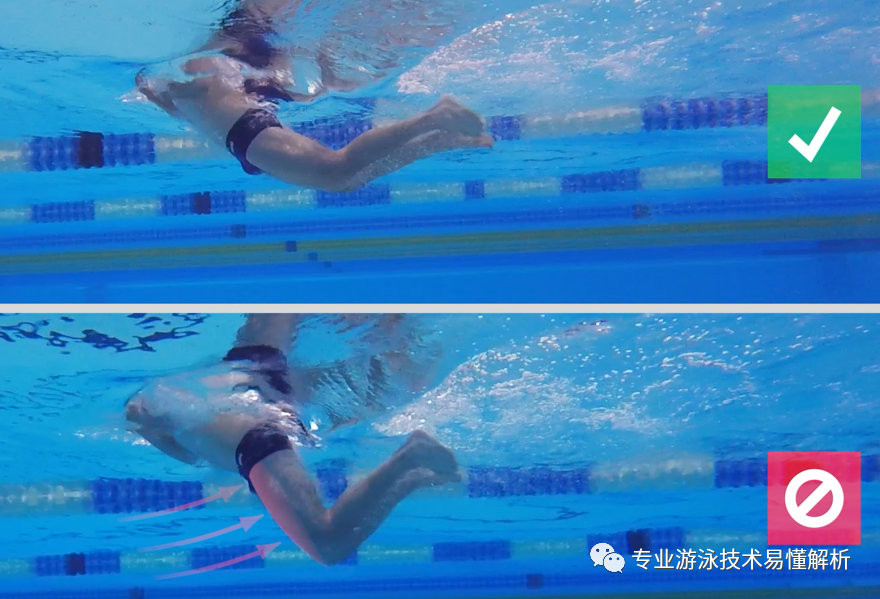
1. The frog-leg movement is a double-edged sword
Undoubtedly, the kicking motion in breaststroke generates the strongest propulsion of all swimming styles! However, the forward water resistance created during the recovery phase of the kick is also the greatest among all strokes. These two factors balance each other out, making breaststroke the slowest of the four main swimming techniques. That said, if you execute a proper breaststroke kick—slowing down the recovery while accelerating the push and squeeze—you’ll find that its overall speed isn’t significantly slower than other swimming styles.
Beyond the forward drag created by the leg recovery, the key technique for improving breaststroke efficiency lies in maintaining stable hips during the kick. Experienced breaststrokers can easily feel how crucial it is to keep the hips steady—this minimizes unnecessary thigh movement and significantly enhances propulsion. In particular, focus on folding your lower legs upward rather than pulling your thighs toward your abdomen as you recover. With practice, you’ll even start to notice the delightful sensation of your legs gliding effortlessly through the water, carried forward naturally as your arms complete their powerful inward sweep.
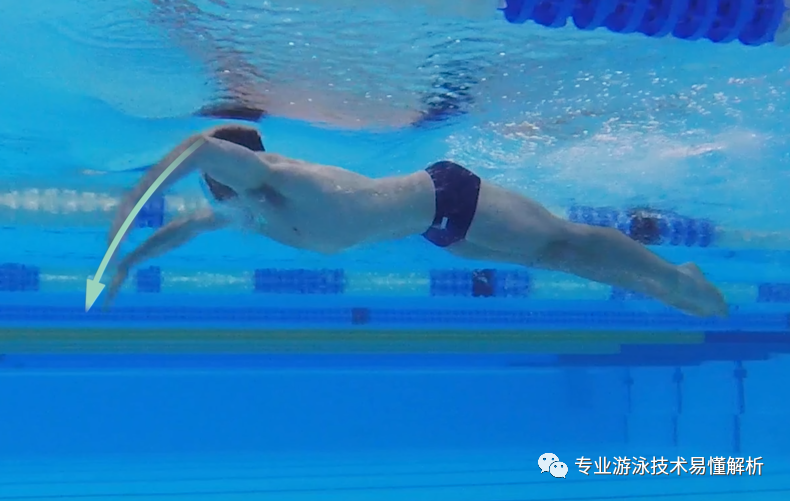
2. Forcing your elbows in defeats the purpose.
Swimmers proficient in breaststroke perform an elbow-tilt motion during the arm pull—though strictly speaking, this "tilt" isn’t a distinct movement in itself, but rather the visible manifestation of the transition from the outward sweep to the accelerated inward pull. The elbow joint plays a crucial role in arm movements across all swimming strokes.
Stabilizing the elbow joint enhances pushing power, and maintaining a high elbow position—within the limits of your body’s flexibility—is a key technique for maximizing that force. While the frog kick’s arm movement naturally creates the appearance of bent elbows, deliberately forcing this position can severely disrupt the smooth flow of the entire stroke.
For beginners, the height of the elbow joint should be comfortable relative to the shoulder joint. However, when practicing the frog hand technique, make sure to keep the elbow position stable while also paying attention to how lifting the elbow affects the efficiency of the frog kick's propulsion through the water—and don’t forget to stay mindful of how your shoulder feels throughout the movement.
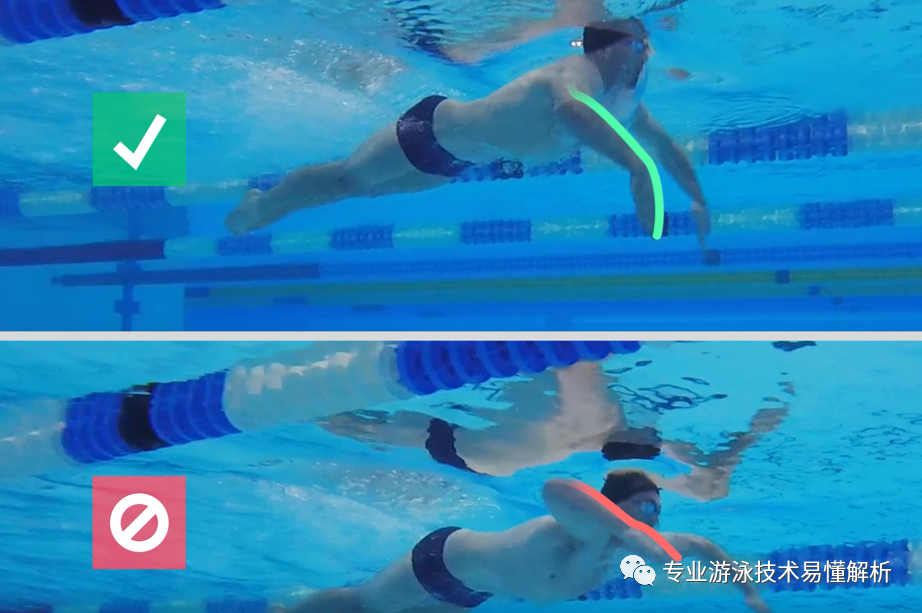
3. Natural and coordinated hand-leg movements create a sense of rhythmic beauty.
Hand-leg coordination is the most crucial element in any swimming stroke—and it represents the final hurdle for swimmers looking to continually improve their technique. The arm recovery phase in breaststroke is one of the movements most often overlooked and misunderstood. When the arms are about to extend forward, the palms should face toward the face, not with palms already turned toward each other. Instead, as the arms naturally come together during the forward extension, that’s when the palms finally meet, palm to palm.
Performing an early palm-to-palm motion can easily cause the breaststroke arm recovery to devolve into an underwater arm movement. Additionally, bringing the palms together too soon often triggers an unconscious, forceful forward extension of the arms, increasing drag even further. In contrast, executing a proper arm recovery above water not only significantly reduces frontal resistance but also allows the arms to extend naturally and swiftly forward—seamlessly coordinating with the frog kick propulsion for a smooth, efficient stroke.
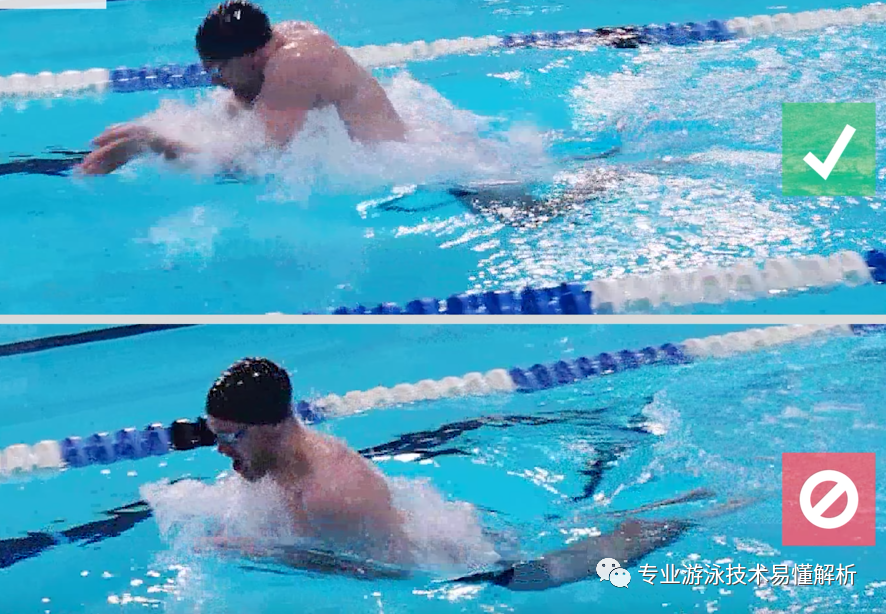
One WeChat official account shares swimming tips, while another focuses on software insights, online resources, and reading experiences.
Thank you for your supportive and encouraging likes, as well as the comments that spark meaningful conversations—and even more, we’d love to see those shares and retweets!
Related Articles
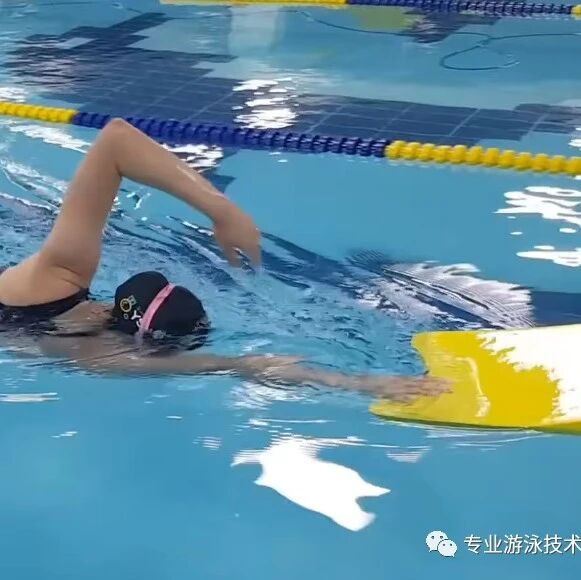
Swimming not only benefits physical health but also enriches one’s understanding of life.
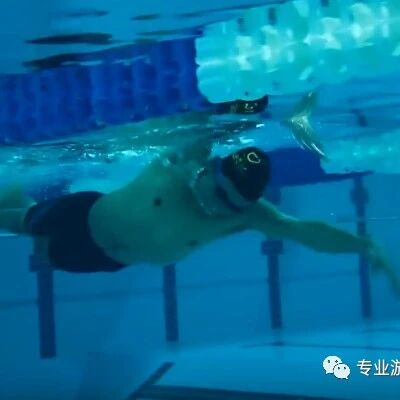
When turning to breathe, avoid three specific movements to maintain a steady freestyle swimming rhythm.
